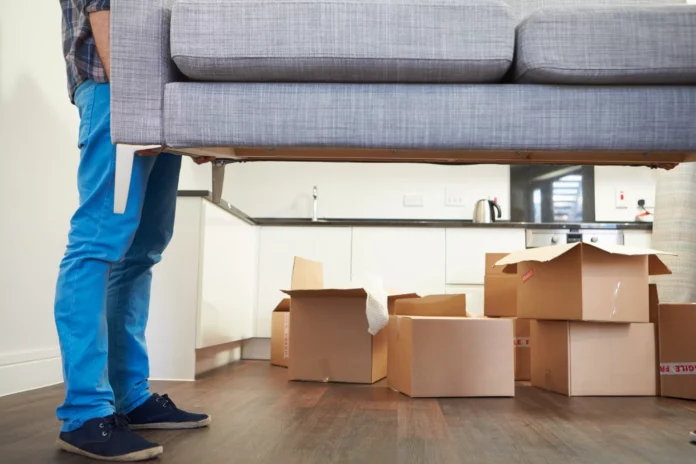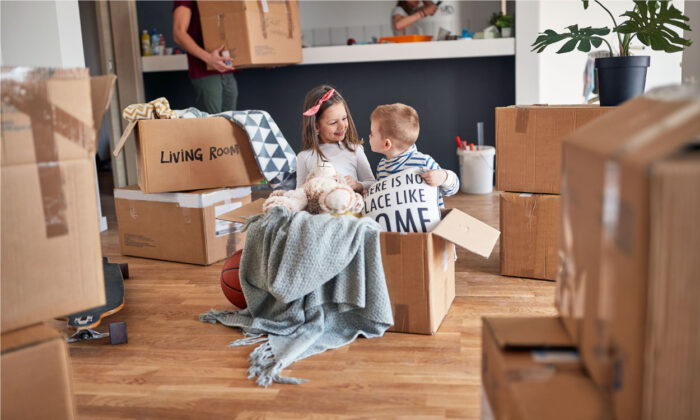
Moving into a new house is an exciting endeavor, but it can also be a stressful one. Ensuring the safety and security of your new home during the relocation process is paramount.
Preparation for the move
Before the big day arrives, thorough preparation is key. This applies both to you and the movers you hire to help you. They start with an inventory assessment to properly safeguard your belongings during the move. Movers evaluate the inventory to determine the size and type of moving truck or vehicles needed. Then, they assess whether special equipment or tools will be required to handle unique items.
Another crucial step of pre-move preparation is ensuring an adequate supply of packing materials. Movers usually double-check that all necessary packing supplies are on hand before moving.
Safety on the road is also important — this is why truck drivers who work with your moving company thoroughly inspect and maintain the moving trucks to ensure they are in good working condition. They do it by checking tire pressure, brakes, and all safety features.
Trusted moving companies always offer insurance that covers your belongings in case of damage — don’t forget to ask about this option before you sign a contract.
Finally, movers always have a plan for emergencies — and in most companies, they even have a dispatch office on call to help them figure out the plan of action.
Smooth packing and loading

When preparing for a move, it’s crucial to safeguard your belongings during the packing and loading stage as well. So, what do movers usually do to protect your possessions from damage during this stage?
- They bring sturdy boxes, packing tape, bubble wrap, and packing paper to secure everything. Movers also avoid overloading boxes to prevent them from breaking during the move.
- Movers wrap fragile items in bubble wrap or packing paper and place them in boxes with ample cushioning, such as crumpled newspaper or packing peanuts.
- While loading, they place heavier items at the bottom of boxes and lighter items on top. This helps maintain stability and prevents damage to delicate items.
If you work with a trusted moving company, you will have no problems having decent answers to all of your questions about items’ security at this stage.
Secure transportation
Reputable moving companies maintain well-maintained trucks that are equipped to handle long-distance or local moves. These vehicles are designed to minimize bumps and shocks to your items. Experienced movers are trained to handle items with care. They know how to lift heavy objects safely and navigate tight spaces without causing damage.
In cases where temperature-sensitive items are being transported, movers may use climate-controlled trucks to ensure that items aren’t exposed to extreme temperatures.
Safe unloading and unpacking
Upon arrival at your new home, your movers will unload boxes and furniture carefully, placing them in their designated rooms. This prevents damage that can occur if items are dropped or mishandled during unloading.
As they unpack with you, keep an inventory to ensure that nothing is missing. Dispose of packing materials responsibly, and consider recycling cardboard boxes to reduce waste.
Besides, movers often create detailed inventory lists, including items’ descriptions and conditions before loading. This helps in tracking and identifying any potential damage during the unpacking process.
Damage inspection after the move

At last, movers perform the final examination to look for any potential damage or missing items once everything has been unpacked. Any problems are noted and quickly fixed. Some moving companies conduct an inventory check as items are unloaded to ensure that everything that was loaded onto the truck has been delivered. This helps prevent any items from being left behind.
If any significant damage is discovered, movers will typically report it to their company’s customer service or claims department. This initiates the process of addressing and potentially compensating for any damage.
Moving into a new house is a significant milestone, and safeguarding it during relocation is essential. By following these steps, you can minimize stress and ensure that your new home remains secure and welcoming. Remember that preparation and diligence are your best allies in this endeavor.
Labeling and Organizing
When embarking on the journey of moving to a new house, one of the often-overlooked aspects is the importance of labeling and organizing your belongings. This simple yet highly effective strategy can significantly ease the transition process.
Clear and comprehensive labeling is key. Make sure to clearly mark each box with its contents and indicate the room it belongs to. This not only helps you locate items easily but also aids the movers in placing boxes in the right areas of your new home. Consider using color-coded labels or a numbering system for even greater efficiency.
Organizing items systematically within boxes is equally crucial. Place similar items together, and prioritize packing essential items that you’ll need immediately upon arrival in a separate, easily accessible box. This way, you won’t find yourself digging through multiple boxes to find everyday essentials like toiletries or a change of clothes.
Valuables and Important Documents

Your valuables, important documents, and irreplaceable heirlooms hold immense sentimental and financial value. To ensure their safety during the move, it’s best to keep them with you rather than entrusting them to the moving truck.
Gather all your essential documents such as passports, birth certificates, financial records, and legal paperwork into a secure folder or briefcase. Valuables like jewelry, artwork, and family heirlooms should also be transported separately. These items are not only precious but can be challenging to replace if lost or damaged.
By personally safeguarding these items, you reduce the risk of them being misplaced or damaged during the moving process. It’s a small but critical step in ensuring a smooth and stress-free transition.
Communication with Movers
Effective communication with your chosen moving company is paramount to a successful move. When hiring movers, be sure to provide them with clear and specific instructions regarding your belongings, especially if you have fragile or sensitive items.
Walk through your home with the movers, pointing out items that require special care or disassembly. Discuss any potential challenges, such as narrow staircases or fragile antiques. Open lines of communication with your movers ensure that they are well-prepared to handle your possessions with the care they deserve.
Additionally, don’t hesitate to ask questions or seek clarification on any concerns you may have. A clear understanding between you and the movers will go a long way in ensuring a smooth and secure relocation.
















